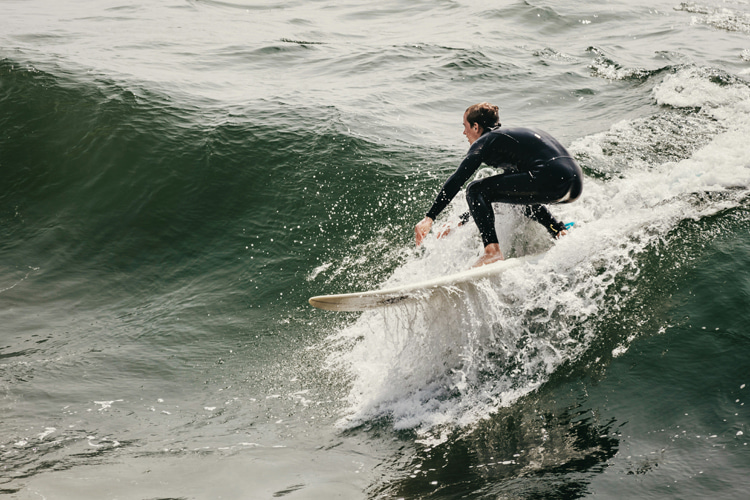
Have you ever surfed with a wetsuit that is accumulating water between your knees and your ankles? Not only does it look kooky, but it is also hindering you from riding waves properly.
A well-chosen, well‑fitting wetsuit is the first step to more comfort, warmth, and confidence in the water.
It locks in a thin layer of water that your body heats, prevents cold surges, boosts your paddling, and even protects you from a few hazards.
Getting it right is key to surfing longer, feeling safer, and enjoying every wave a little more.
We at SurferToday.com have tested and worn more wetsuits than the years we’ve been online sharing knowledge and experience with our dear readers.
So, it might sound a little picky, but owning a snug wetsuit makes all the difference. Let’s dissect some of the variables that make it such a true statement.
Warmth and Insulation
Your body naturally warms a thin film of water between the skin and neoprene/Yulex. That’s what a good wetsuit does.
A snug fit traps that layer so heat builds up instead of washing away in cold flushes. If the suit is loose, water circulates and carries your warmth with it, chilling you quickly.
Does it make sense?
And then neoprene thickness adds another layer of defense: thicker foam holds more warmth but sacrifices some flexibility, while thinner foam flexes easily but works best in milder temps.
So, the trick is to find the right balance – and that ain’t that hard.

Keeping Out the Cold: Fight Flushing
Here’s another perspective.
Imagine waves pumping ice water into your second skin every time you duck dive.
A loose fit lets cold water pour in around the neck, wrists, and ankles. These are the main entry points.
When water keeps entering, your body never warms up that layer, so every wave feels like an electrical shock. A snug seal around the cuffs and collar is your best defense against relentless flushing.
Performance and Comfort
A wetsuit that clings to your body moves with you.
Snug neoprene stretches with each paddle stroke and pop‑up, letting you reach farther and pop up faster.
If it’s too loose, folds can bunch under your arms or around your hips, restricting movement and costing you precious seconds when you need to paddle into a wave.

Safety in Cold Water
Cold water drains your core temperature faster than you might think. Hypothermia can sneak up – numb limbs make it hard to swim back to shore.
By keeping water still and warm, a snug suit extends your safe time in the lineup.
Also, in very cold conditions, you may need a thicker suit or even gloves and booties, but the same snug‑fit rules still apply to every panel of neoprene.
Durability and Neoprene Health
Neoprene flexes about 10-15 percent when wet, but overstretching it day after day breaks down seams and foam cells faster.
A wetsuit that’s two sizes too small might look tight, but it will shred faster.
A proper snug fit avoids extreme tension at the seams and helps your suit last through dozens of sessions.

Finding the Perfect Second Skin
It’s quite easy to find the right wetsuit, even if you’re in between sizes. Try this:
- Try Standing Straight: The suit should slide on with effort, but not force;
- Check Your Wrists and Ankles: Sleeves should sit at the wrist bone, legs just above the ankle bone – no riding up or gaping;
- Raise Your Arms: Reach overhead; the suit should stretch without pulling your chest up. If it rides up under your arms, it’s too loose; if it binds at your chest, it’s too tight;
- Feel for Empty Pockets: Any air gaps inside mean cold water will rush in. Smooth seams and consistent contact are key;
Caring for Your Fit
Wetsuits change over time and also lose some of their original properties and characteristics. It’s not a myth – they really do.
That’s why you should really care for them.
After each session, rinse with fresh water to remove salt and UV damage. Hang dry inside out on a wide hanger to preserve shape.
Store flat or on a wide‑shouldered hanger out of direct sunlight.
Over time, neoprene molds to your body. A suit that felt snug at first will soften and settle into that perfect “second skin” feel.
Get that fit right, and your wetsuit will be more than gear.
It becomes your heat exchanger, your performance partner, and your first line of defense on every wave.
Enjoy the warmth, ride with confidence, and stay out there longer.
Words by Luís MP | Founder of SurferToday.com


Leave a Reply